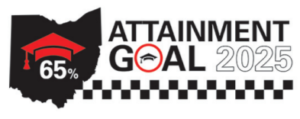
Earlier this month, Governor Perry of Texas signed into law five major education bills all of which are related to or directly impact Career Technical Education (CTE) in the Lone Star state. Below is a high-level summary of each of the bills.
HB 5
The most significant bill is the 100+ page HB 5, which addresses a wide array of issues, many of which have a direct impact on Career Technical Education in the state. The most significant changes are that students now only need to take five end-of-course exams for graduation, down from 12 exams, and revisions to the high school graduation requirements. While the end-of-course assessments used to count towards 15% of a student’s grade, a student’s performance on the assessments can no longer be used for this purpose or to determine class rank (which is significant given Texas’ policy of open access to public institutions of higher education for those students in the top 10% of their class or “the 10 percent ruleâ€).
As far as the changes to the graduation requirements, currently, all students are automatically enrolled into the Recommended High School Program, a curriculum set at the college- and career-ready level and aligned with most admissions requirements at the state’s public four-year institutions. Students can choose to opt down into a lower diploma track. Texas was the first state in the country to adopt such graduation requirements at the college- and career-ready level for all students.
Under the new system, however, students will be automatically enrolled in the “Foundation†program, requiring four years of English; three credits in mathematics (including Algebra I and geometry), science (including biology and chemistry or physics), and social studies; two credits in the same language (including computer programming languages); five elective credits; and one fine arts credit.
Students can also pursue CTE-focused endorsements in STEM, Business and Industry, Public Services, Arts and Humanities, and Multidisciplinary Studies, which requires a fourth year of math and science (or advanced CTE courses), two additional elective credits, and some concentration of CTE courses, which is largely undefined in the legislation. Students can also graduate with “distinguished level of achievement†by completing the Foundation requirements plus a fourth year of mathematics (including Algebra II), a fourth credit of science, and an endorsement.  Importantly, only students who graduate at the “distinguished†level will be able to take advantage of the automatic state college admissions under the top 10 percent rule.
A few other key provisions include:
- Districts can offer a course or activity without state approval if it’s developed with institutions of higher education and business/labor and allows students to directly enter, without remediation, an institution of higher education, CTE training program, apprenticeship, or internship required for an industry-recognized certificate or course credit.
- Principals must ensure any middle school students who are off-track to graduation develop a personal graduation plan. All high school students are expected to have personal graduation plans as well, that identify which, if any, endorsements and diploma options the student plans to pursue.
- High school diplomas and transcripts will indicate whether a student has completed a certificate, Foundation program, endorsement, distinguished level of achievement and “performance acknowledgement.”
- Change to A-F grading for district- and school-level accountability performance.
- The adoption or development, by the TEA, of postsecondary readiness assessment tools Algebra II and English III.
- Reimbursements to districts for students’ certification and licensure exams.
- Special accreditation investigations may be conducted by the Texas Education Agency (TEA) when/if excessive numbers of students or disproportionate numbers of students from certain demographic groups are graduating with a particular endorsement and/or not completing Algebra II.
HB 2201: Increase in Advanced Technology and Career-Related Courses
This bill requires that the State Board of Education identifies and approves at least six advanced CTE and/or technology application courses that may satisfy the fourth credit of mathematics (required for endorsements and the distinguished-level diploma. The Act specifically mentions personal financial literacy as one option of an acceptable course.
The law also changes earlier language, allowing students to substitute their third and fourth years of mathematics and science courses with “advanced career and technical course[s] designated by the State Board of Education as containing substantively similar and rigorous and academic content.†Finally, this bill directs the State Board to establish a process for reviewing and approving applied science, technology, engineering and mathematics (STEM) courses to count towards students’ mathematics and science requirements, after they have completed Algebra I and biology. [Note: This bill has been wrapped into HB 5].
SB 441: Texas Fast Start Program
This bill requires the Texas Higher Education Coordinating Board to identify and develop models to support “fast start†programs at Texas’ junior colleges, state public colleges, and public technical institutions that effectively enable students to obtain postsecondary certificates and degrees at an accelerated pace. The fast start programs can incorporate competency-based learning techniques, must be accessible to a range of adult leaners, and must be deployable statewide.
HB 3662: Texas Workforce Innovation Needs Program
This bill establishes the Texas Workforce Innovation Needs Program to provide districts and institutions of higher education opportunities to create and offer innovative programs designed to prepare students for high-demand careers. The awarded programs must focus on student engagement through competency-based learning anchored in the goal of students earning postsecondary certificates or degrees and incorporate CTE dual enrollment or early college opportunities. A major goal of this bill is to develop model programs and practices that can be shared statewide. The Act takes effect in September 2013; it is unclear exactly when sites will be selected.
HB 842: CTE & College Credit
This bill clarifies and broadens the state’s current dual enrollment policy to allow students to earn concurrent academic credit for a course or activity, including an apprenticeship or another training program, that leads to an industry-recognized credential, certificate or associate’s degree and is approved by the Texas Higher Education Commission. The bill goes into effect for the 2013-14 school year.
HB 809: Employment Information for Secondary School Students
This bill requires the Texas Education Agency to provide employment projection data to school districts in support of CTE planning based on data received on a quarterly basis from the Texas Workforce Commission.
There has been significant coverage of these policy changes – some positive, some not-so-positive (including this piece from Representative Mark Strama: Why I Voted Against HB 5) but now the hard work begins of implementing the education overhaul.
Kate Blosveren, Associate Executive Director
 The Strengthening Career and Technical Education for the 21st Century Act (Perkins V) places a strong emphasis on the alignment of Career Technical Education (CTE) programs of study with state, regional and local economies. The legislation requires Perkins-funded programs to prepare students for “high-skill, high-wage, or in-demand occupations.” These terms — high skill, high wage and in demand — are foundational to Perkins V, appearing in both the purpose of the law and the definition of CTE.
The Strengthening Career and Technical Education for the 21st Century Act (Perkins V) places a strong emphasis on the alignment of Career Technical Education (CTE) programs of study with state, regional and local economies. The legislation requires Perkins-funded programs to prepare students for “high-skill, high-wage, or in-demand occupations.” These terms — high skill, high wage and in demand — are foundational to Perkins V, appearing in both the purpose of the law and the definition of CTE.

 In Massachusetts, Career/Vocational Technical Education Schools (CVTE) are renowned for offering rigorous, high-quality programs of study across a variety of disciplines. While CVTE graduates have always experienced high rates of success academically and in their careers, state leaders in Massachusetts wanted to know whether these outcomes directly result from the CVTE model. In 2017, the Massachusetts Department of Elementary and Secondary Education partnered with Shaun Dougherty (at the time, a researcher at the University of Connecticut),
In Massachusetts, Career/Vocational Technical Education Schools (CVTE) are renowned for offering rigorous, high-quality programs of study across a variety of disciplines. While CVTE graduates have always experienced high rates of success academically and in their careers, state leaders in Massachusetts wanted to know whether these outcomes directly result from the CVTE model. In 2017, the Massachusetts Department of Elementary and Secondary Education partnered with Shaun Dougherty (at the time, a researcher at the University of Connecticut),  Similarly, in Ohio, three community colleges
Similarly, in Ohio, three community colleges

